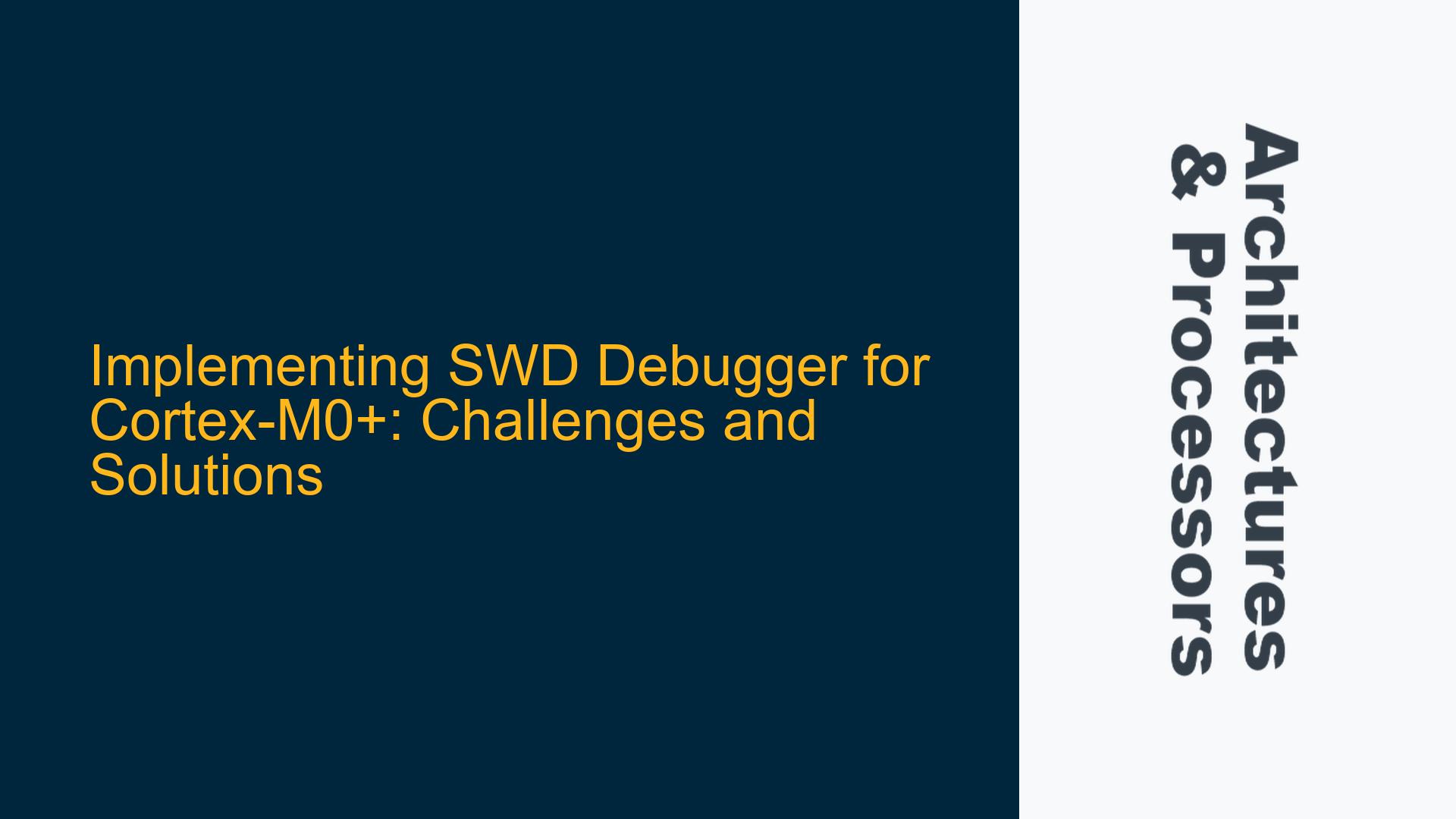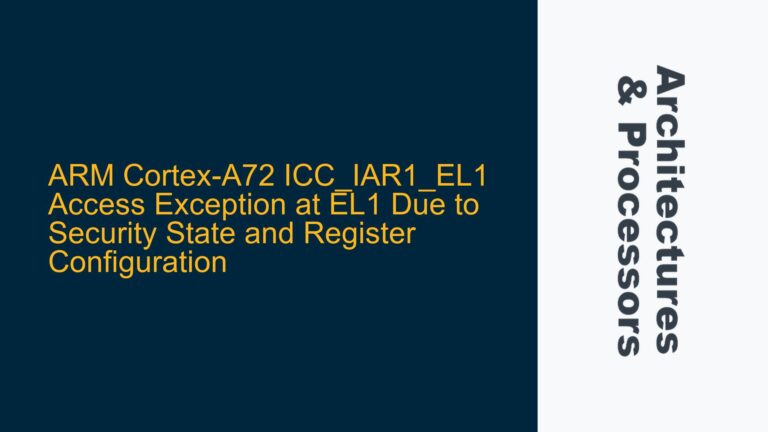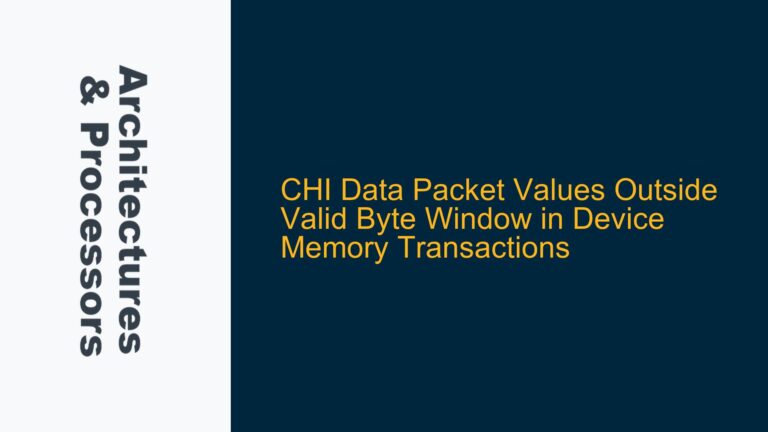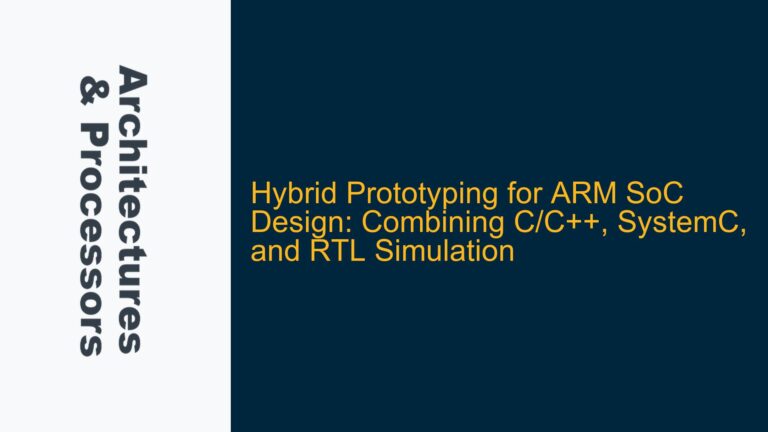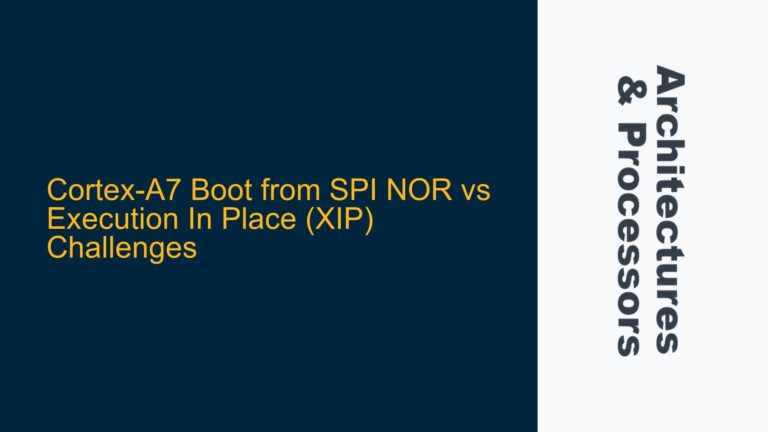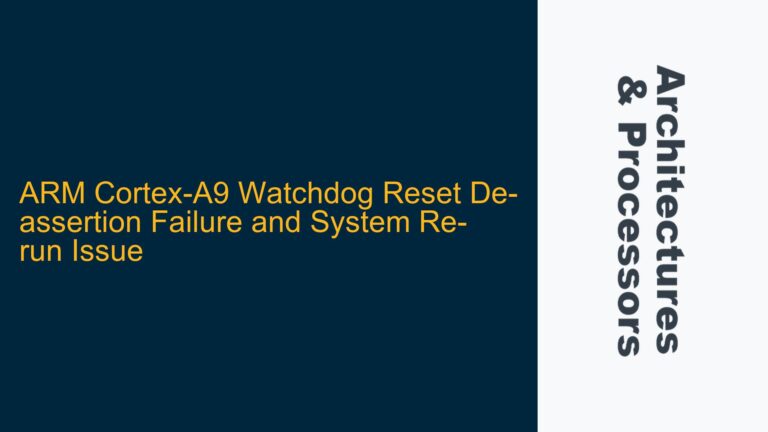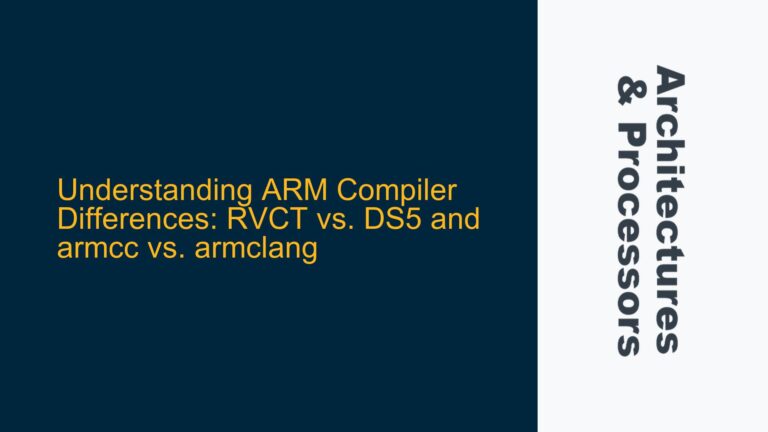Cortex-M0+ SWD Debug Protocol Implementation Challenges
Developing a Serial Wire Debug (SWD) debugger for the ARM Cortex-M0+ processor, particularly when targeting an FPGA-based implementation, presents several technical challenges. The SWD protocol, while relatively simple in its basic form, requires a deep understanding of the ARM Debug Interface Architecture and the Cortex-M0+ core’s debug capabilities. The primary tasks include reading and writing flash memory, configuring breakpoints, halting the core, and managing debug registers. These tasks are not trivial, especially when aiming to implement a lightweight debugger without relying on existing frameworks like GDB or OpenOCD.
The ARM documentation, while comprehensive, often lacks practical implementation details such as flowcharts or pseudocode. This absence of reference material can make it difficult to translate the theoretical aspects of the SWD protocol into a functional debugger. The Cortex-M0+ core, being a low-power, low-cost processor, has a simplified debug architecture compared to higher-end Cortex-M processors, which further complicates the implementation. For instance, the Cortex-M0+ does not support some of the more advanced debug features found in the Cortex-M4 or Cortex-M7, such as Data Watchpoint and Trace (DWT) or Instrumentation Trace Macrocell (ITM). This limitation necessitates a more focused approach to implementing the basic debug functionalities.
One of the key challenges is understanding the sequence of operations required to perform tasks like reading and writing flash memory. The SWD protocol operates at a low level, requiring precise timing and control over the debug interface signals. Additionally, the Cortex-M0+ debug interface uses a set of debug registers that must be accessed through the SWD protocol. These registers control various aspects of the core’s behavior, such as halting execution, setting breakpoints, and accessing memory. Understanding the exact sequence of operations to manipulate these registers is critical for implementing a functional debugger.
Another challenge is managing the communication between the FPGA-based debugger and the Cortex-M0+ target. The SWD protocol uses a two-wire interface (SWDIO and SWCLK) for communication, which must be carefully managed to ensure reliable data transfer. The FPGA must generate the correct timing for the SWCLK signal and handle the bidirectional nature of the SWDIO signal. This requires a solid understanding of both the SWD protocol and the FPGA’s capabilities in terms of timing and signal handling.
Missing Reference Implementation and Debug Register Access Complexity
The lack of a reference implementation or detailed flowcharts in the ARM documentation is a significant hurdle. While the ARM Debug Interface Architecture document (ADIv5) provides a detailed description of the SWD protocol and the debug registers, it does not offer practical guidance on how to implement these features in a real-world system. This gap in the documentation makes it difficult to understand the exact sequence of operations required to perform tasks like reading and writing flash memory or configuring breakpoints.
The Cortex-M0+ debug architecture includes several key registers that must be accessed through the SWD protocol. These include the Debug Halting Control and Status Register (DHCSR), the Debug Exception and Monitor Control Register (DEMCR), and the Flash Patch and Breakpoint (FPB) unit registers. Each of these registers plays a critical role in controlling the core’s debug behavior. For example, the DHCSR register is used to halt and resume the core, while the FPB registers are used to configure hardware breakpoints.
Accessing these registers through the SWD protocol requires a precise sequence of operations. First, the debugger must send a request to read or write a specific register. This request includes the address of the register and the type of operation (read or write). The Cortex-M0+ core then responds with an acknowledgment and the requested data (in the case of a read operation). The timing of these operations is critical, as any deviation from the expected sequence can result in communication errors or incorrect behavior.
The complexity of accessing these registers is further compounded by the need to manage the core’s state during debug operations. For example, when halting the core, the debugger must ensure that the core is in a safe state before attempting to access memory or configure breakpoints. This requires a thorough understanding of the core’s behavior and the interactions between the debug registers and the core’s execution state.
Implementing SWD Debugger Functions: Reading Flash, Writing Flash, and Breakpoints
Implementing the core functions of an SWD debugger for the Cortex-M0+ requires a detailed understanding of the SWD protocol, the Cortex-M0+ debug architecture, and the specific requirements of each task. Below, we outline the steps required to implement key debugger functions, including reading and writing flash memory, configuring breakpoints, and halting the core.
Reading Flash Memory
Reading flash memory through the SWD protocol involves several steps. First, the debugger must halt the core to ensure that the flash memory is not being accessed by the core during the read operation. This is done by setting the C_HALT bit in the DHCSR register. Once the core is halted, the debugger can access the flash memory using the Memory Access Register (MEM-AP). The MEM-AP provides a bridge between the debug interface and the system memory, allowing the debugger to read and write memory locations.
To read a specific memory location, the debugger must first configure the MEM-AP to access the desired address. This involves writing the address to the MEM-AP’s Transfer Address Register (TAR) and then initiating a read operation. The debugger then reads the data from the MEM-AP’s Data Read Register (DRW). The exact sequence of operations is as follows:
- Halt the core by setting the C_HALT bit in the DHCSR register.
- Configure the MEM-AP to access the desired memory address by writing the address to the TAR register.
- Initiate a read operation by setting the appropriate bits in the MEM-AP’s Control and Status Register (CSW).
- Read the data from the DRW register.
Writing Flash Memory
Writing flash memory is more complex than reading, as it requires additional steps to ensure that the flash memory is properly programmed. The Cortex-M0+ flash memory is typically programmed using a series of write operations, followed by a verification step to ensure that the data was written correctly. The exact sequence of operations depends on the specific flash memory controller used in the Cortex-M0+ implementation.
To write to flash memory, the debugger must first halt the core and configure the MEM-AP to access the desired memory address. The debugger then writes the data to the DRW register and initiates a write operation. After the write operation is complete, the debugger must verify that the data was written correctly by reading back the memory location and comparing it to the expected value. The exact sequence of operations is as follows:
- Halt the core by setting the C_HALT bit in the DHCSR register.
- Configure the MEM-AP to access the desired memory address by writing the address to the TAR register.
- Write the data to the DRW register.
- Initiate a write operation by setting the appropriate bits in the MEM-AP’s CSW register.
- Verify the data by reading back the memory location and comparing it to the expected value.
Configuring Breakpoints
Configuring breakpoints in the Cortex-M0+ involves using the Flash Patch and Breakpoint (FPB) unit. The FPB unit allows the debugger to set hardware breakpoints by redirecting instruction fetches from a specific memory address to a breakpoint instruction. The Cortex-M0+ supports a limited number of hardware breakpoints, typically up to four.
To configure a breakpoint, the debugger must first halt the core and then configure the FPB unit to redirect instruction fetches from the desired address. This involves writing the address to the FPB’s Comparator Register and enabling the corresponding breakpoint in the FPB’s Control Register. The exact sequence of operations is as follows:
- Halt the core by setting the C_HALT bit in the DHCSR register.
- Write the desired breakpoint address to the FPB’s Comparator Register.
- Enable the breakpoint by setting the appropriate bit in the FPB’s Control Register.
Halting the Core
Halting the Cortex-M0+ core is a fundamental operation in the debug process. The core can be halted by setting the C_HALT bit in the DHCSR register. Once halted, the core stops executing instructions and enters debug mode, allowing the debugger to access memory and configure breakpoints. The core can be resumed by clearing the C_HALT bit.
To halt the core, the debugger must send a write request to the DHCSR register with the C_HALT bit set. The exact sequence of operations is as follows:
- Send a write request to the DHCSR register with the C_HALT bit set.
- Wait for the core to enter debug mode, indicated by the S_HALT bit in the DHCSR register.
Managing Debug Register Access
Accessing the debug registers in the Cortex-M0+ requires a precise sequence of operations to ensure that the core’s state is properly managed. The debug registers are accessed through the SWD protocol, which involves sending a request to read or write a specific register and then handling the core’s response. The timing of these operations is critical, as any deviation from the expected sequence can result in communication errors or incorrect behavior.
To access a debug register, the debugger must first send a request to read or write the register. This request includes the address of the register and the type of operation (read or write). The Cortex-M0+ core then responds with an acknowledgment and the requested data (in the case of a read operation). The exact sequence of operations is as follows:
- Send a request to read or write a specific debug register.
- Wait for the core’s response, including an acknowledgment and the requested data (if applicable).
- Handle the core’s response, ensuring that the operation was successful.
Conclusion
Implementing an SWD debugger for the Cortex-M0+ processor is a complex task that requires a deep understanding of the SWD protocol, the Cortex-M0+ debug architecture, and the specific requirements of each debug operation. By following the detailed steps outlined above, it is possible to implement a functional debugger capable of reading and writing flash memory, configuring breakpoints, and halting the core. While the lack of reference material in the ARM documentation presents a challenge, a thorough understanding of the underlying principles and careful attention to detail can lead to a successful implementation.
